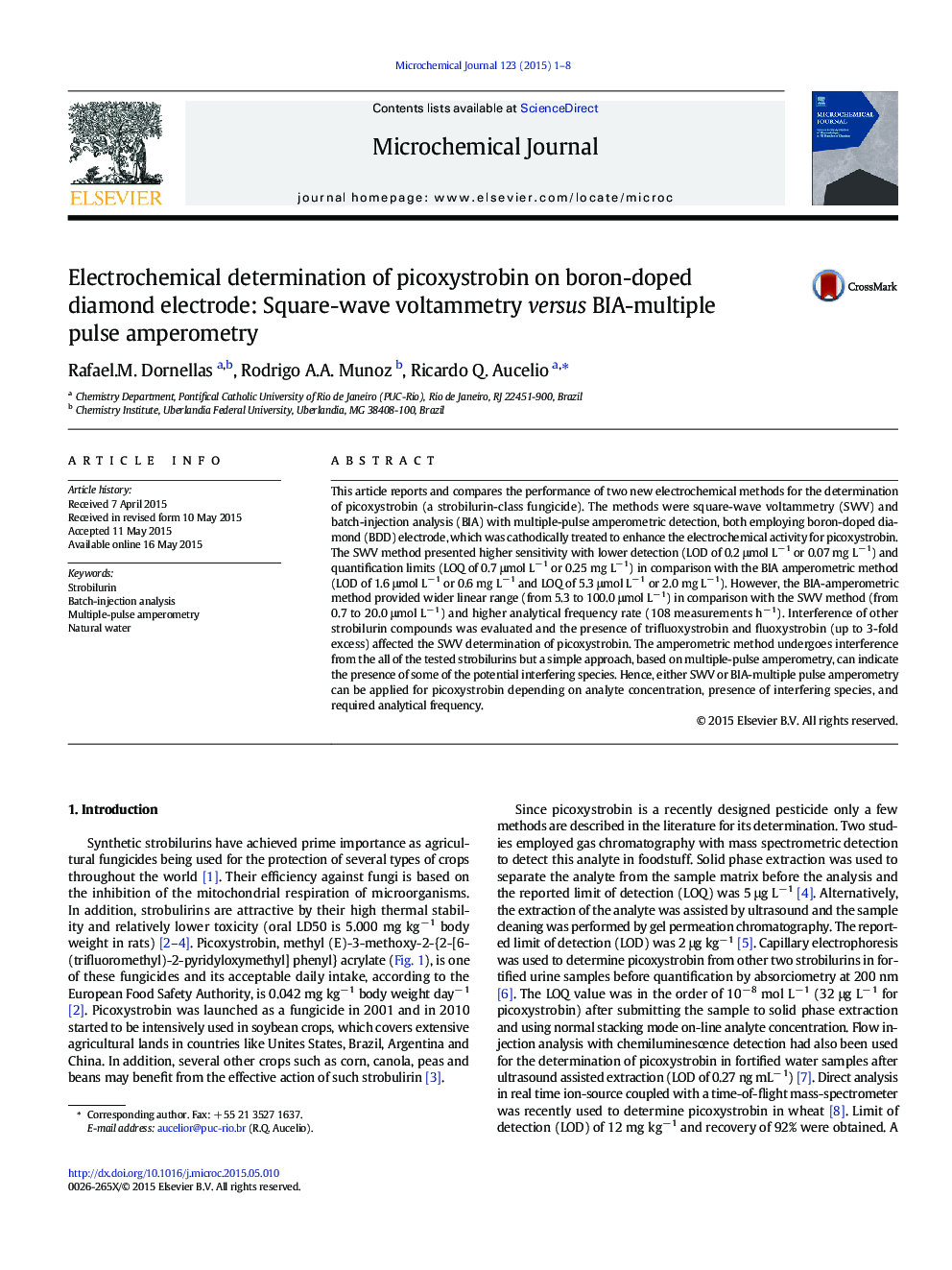| Article ID | Journal | Published Year | Pages | File Type |
|---|---|---|---|---|
| 1227633 | Microchemical Journal | 2015 | 8 Pages |
•Trace determination of picoxyxtrobin was achieved by two new electroanalytical methods.•Boron doped diamond electrode enabled better signal in voltammetry and amperometry.•BDD was activated through cathodic treatment thus increasing the sensing of the analyte at high positive potentials.•Batch Injection Analysis enabled high analytical frequency and indicated interferences through multiple-pulse approach.•Square-wave voltammetry enabled higher sensitivity and diagnostic data to evaluate analyte oxidation process.
This article reports and compares the performance of two new electrochemical methods for the determination of picoxystrobin (a strobilurin-class fungicide). The methods were square-wave voltammetry (SWV) and batch-injection analysis (BIA) with multiple-pulse amperometric detection, both employing boron-doped diamond (BDD) electrode, which was cathodically treated to enhance the electrochemical activity for picoxystrobin. The SWV method presented higher sensitivity with lower detection (LOD of 0.2 μmol L− 1 or 0.07 mg L− 1) and quantification limits (LOQ of 0.7 μmol L− 1 or 0.25 mg L− 1) in comparison with the BIA amperometric method (LOD of 1.6 μmol L− 1 or 0.6 mg L− 1 and LOQ of 5.3 μmol L− 1 or 2.0 mg L− 1). However, the BIA-amperometric method provided wider linear range (from 5.3 to 100.0 μmol L− 1) in comparison with the SWV method (from 0.7 to 20.0 μmol L− 1) and higher analytical frequency rate (108 measurements h− 1). Interference of other strobilurin compounds was evaluated and the presence of trifluoxystrobin and fluoxystrobin (up to 3-fold excess) affected the SWV determination of picoxystrobin. The amperometric method undergoes interference from the all of the tested strobilurins but a simple approach, based on multiple-pulse amperometry, can indicate the presence of some of the potential interfering species. Hence, either SWV or BIA-multiple pulse amperometry can be applied for picoxystrobin depending on analyte concentration, presence of interfering species, and required analytical frequency.
